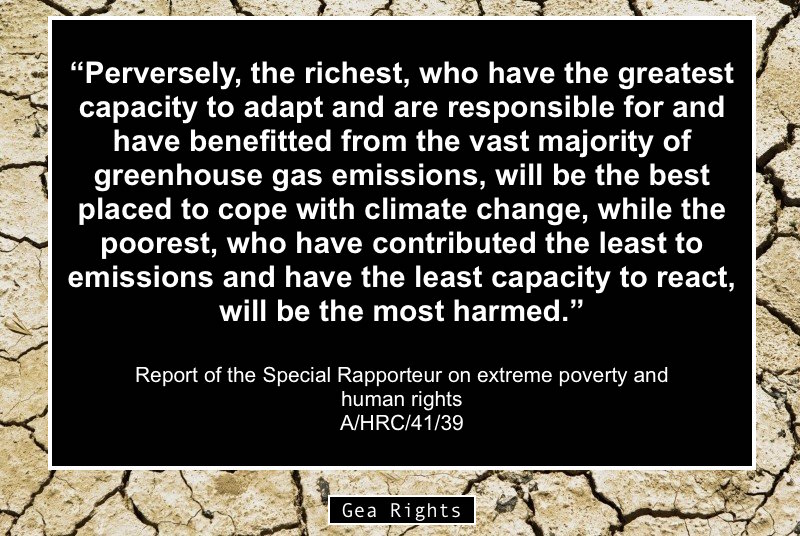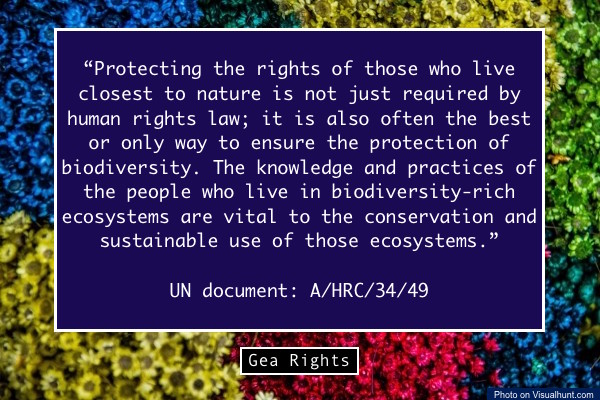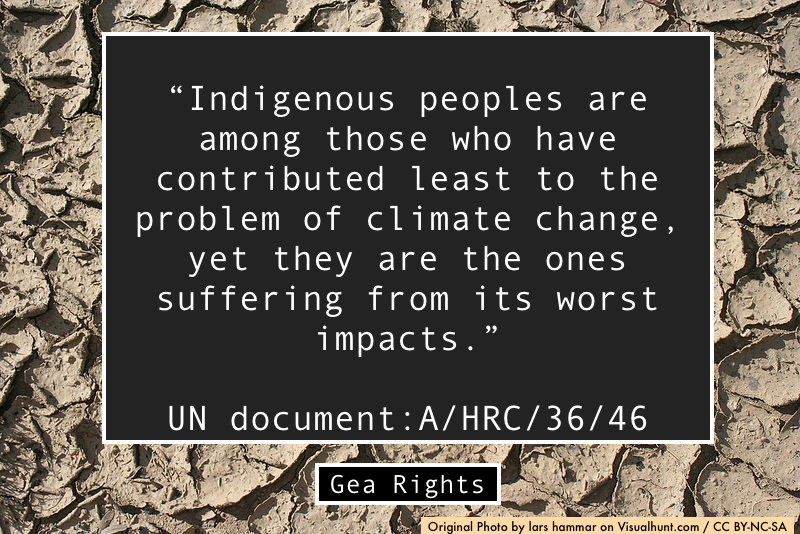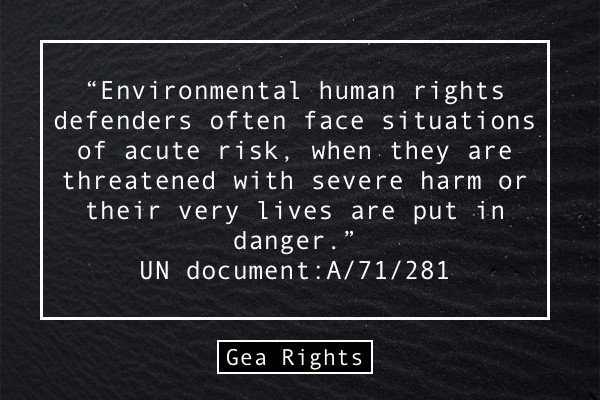The Rio Declaration and Agenda 21 provide explicit international recognition of the symbiotic aspects of indigenous peoples’ relationship with nature.
In the Rio Declaration, Principle 22 represents a key provision, stating that:
“Indigenous people and their communities and other local communities have a vital role in environmental management and development because of their knowledge and traditional practices. States should recognize and duly support their identity, culture and interests and enable their effective participation in the achievement of sustainable development.”
This provision is based on the assumption that the protection of indigenous culture plays a fundamental role in the achievement of sustainable development, and affirms the traditional practice and knowledge worthy of protection as being consistent with sustainable environmental policy.
Chapter 26 of Agenda 21 is titled “Recognizing and Strengthening the Role of Indigenous People and their Communities”.
It is divided into four sections:
- Basis for action
- Objectives
- Activities
- Means of Implementation
The first section affirms that indigenous people and their communities:
“have developed over many generations a holistic traditional scientific knowledge of their lands, natural resources and environment” ,
“shall enjoy the full measure of human rights and fundamental freedoms without hindrance or discrimination” and
“In view of the interrelationship between the natural environment and its sustainable development and the cultural, social, economic and physical well-being of indigenous people, national and international efforts to implement environmentally sound and sustainable development should recognize, accommodate, promote and strengthen the role of indigenous people and their communities”
Governments and, where appropriate, intergovernmental organizations should aim at fulfilling the following objectives, in full partnership with indigenous people and their communities:
- Establishment of a process to empower indigenous people and their communities through several measures, which include, inter alia:
- Recognition that the lands of indigenous people and their communities should be protected from activities that are environmentally unsound or that the indigenous people involved consider to be socially and culturally inappropriate;
- Recognition that traditional and direct dependence on renewable resources and ecosystems, including sustainable harvesting, continues to be essential to the cultural, economic and physical well-being of indigenous people and their communities;
- Enhancement of capacity-building for indigenous communities, based on the adaptation and exchange of traditional experience, knowledge and resource-management practices, to ensure their sustainable development.
- Establishment, where appropriate, of arrangements to strengthen the active participation of indigenous people and their communities in the national formulation of policies, laws and programmes relating to resource management and other development processes that may affect them, and their initiation of proposals for such policies and programmes;
- Involvement of indigenous people and their communities at the national and local levels in resource management and conservation strategies and other relevant programmes established to support and review sustainable development strategies, such as those suggested in other programme areas of Agenda 21.
Among the activities pointed out in Chapter 26, are indicated some measures aimed at:
- guaranteeing to indigenous peoples greater control over their lands, self-management of their resources, participation in development decisions affecting them, including, where appropriate, participation in the establishment or management of protected areas;
- incorporating their values, views and knowledge, including the unique contribution of indigenous women, in resource management and other policies and programmes that may affect them;
- developing or strengthening national arrangements to consult with indigenous people and their communities in order to reflect their needs and to incorporate their values, knowledges and practices in national policies and programmes in the field of natural resource management and other programmes affecting them.
“Achieving a better understanding of indigenous people’s knowledge and management experience related to the environment, and applying this to contemporary development challenges.”
The means of implementation are identified in:
- Financing and cost evaluation;
- Legal and administrative frameworks;
- Human resource development.
Besides Chapter 26, Agenda 21 refers to TK in several other chapters regarding human health (Chapter 6), management of fragile ecosystems (Chapters 12 and 13), sustainable agriculture and rural development (Chapter 14), conservation of biological diversity (Chapter 15), biotechnology (Chapter 16), protection of oceans and seas (Chapter 17), sustainable development (Chapter 35), and promotion of education, public awareness and training (Chapter 36).
Credits:
- C.Metcalf, Indigenous Rights and the Environment: Evolving International Law, in Human Rights and the Environment Volume II, ed. by D. L. Shelton, An Elgar Research Collection, 2011.
- Rio Declaration on Environment and Development
- Agenda 21
Photo by CGIAR Climate on Visualhunt / CC BY-NC-SA







Leave a Reply